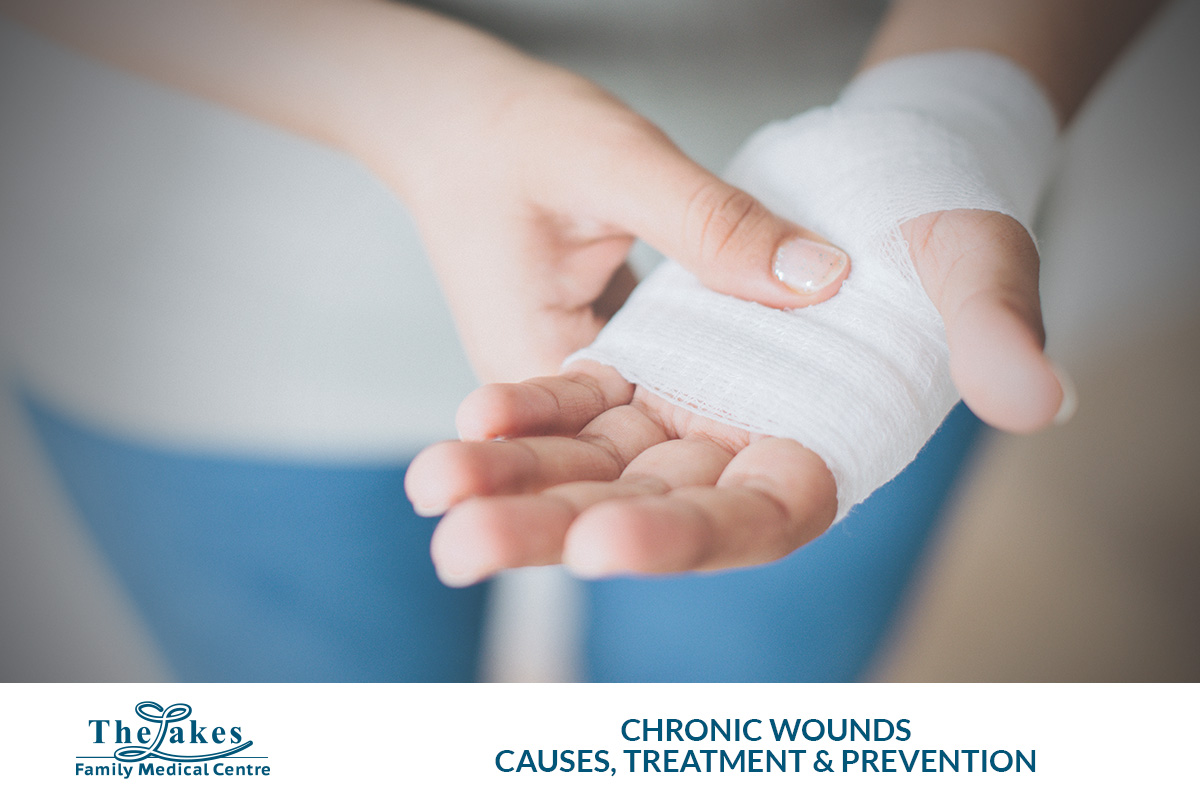
Not all wounds heal the same way. While most minor cuts and injuries recover within a few weeks, chronic wounds take longer and may not heal at all without medical intervention. If you are living with a wound that has not improved after four weeks, you may have a chronic wound that needs specialised care.
In this article, we will explore what chronic wounds are, what causes them and how to treat and prevent them effectively.
What Is a Chronic Wound?
A chronic wound is a break in the skin that fails to heal within four weeks. Unlike acute wounds, which follow the body’s normal healing process, chronic wounds remain open, become infected or worsen over time.
These wounds are often linked to underlying medical conditions such as diabetes, obesity or poor circulation, which can impair the healing process.
Types of Chronic Wounds
Chronic wounds are grouped into four major types, depending on the underlying cause:
- Arterial ulcers – Caused by poor blood flow due to narrowed or blocked arteries
- Diabetic foot ulcers – Common in people with poorly controlled diabetes
- Venous leg ulcers – Caused by vein damage and fluid build-up in the legs
- Pressure injuries (bedsores) – Result from prolonged pressure, often in people with limited mobility
Each wound type requires a different treatment approach, which is why an accurate diagnosis from your GP is essential.
Common Symptoms of Chronic Wounds
If you have a chronic wound, you may notice:
- Persistent pain or discomfort
- Oozing, discharge or bleeding
- Swelling or inflammation around the wound site
- Foul odour from the wound
- Limited movement or difficulty walking
These symptoms may get worse without treatment, leading to infections or more serious complications. If you notice any of the above, book a wound care appointment in Brisbane as soon as possible.
What Causes Chronic Wounds?
Chronic wounds develop when something interferes with your body’s natural healing process. Several risk factors increase your likelihood of developing a slow-healing wound:
Health Conditions That Delay Wound Healing:
- Diabetes and high blood sugar levels
- Obesity, which restricts blood flow and oxygen delivery to tissues
- Heart failure, anaemia or lung disease
- Poor circulation, including varicose veins or deep vein thrombosis (DVT)
- Peripheral neuropathy (nerve damage)
- Skin conditions, such as dermatitis or radiation-damaged skin
- Immunocompromised status, due to cancer, HIV or medication
- Swelling in limbs (peripheral oedema)
If you have one or more of these conditions, it is important to monitor wounds closely and seek early treatment from your local GP in Brisbane.
Diagnosing a Chronic Wound
Your GP will assess your wound through a physical examination and a review of your medical history. They may also:
- Order ultrasound imaging to assess blood flow
- Take a wound swab or biopsy to test for infection
- Recommend blood tests to evaluate underlying health concerns
Identifying the root cause is key to creating an effective chronic wound treatment plan.
When Should You See a GP?
You should visit your GP if:
- Your wound has not healed after four weeks
- You have diabetes and notice a foot ulcer
- The wound becomes red, swollen or infected
- You experience fever, worsening pain or feel unwell
- The wound affects your daily life or mental wellbeing
The sooner you seek help, the better your chances of avoiding complications like infection, hospitalisation or even amputation.
How Are Chronic Wounds Treated?
Chronic wound care often requires a multidisciplinary approach, involving a team of healthcare professionals such as general practitioners, nurses, dieticians and physiotherapists. The goal is to treat both the wound itself and any underlying conditions that may be slowing the healing process.
Treatment commonly follows the TIME principle:
Tissue Debridement – Removing dead or infected tissue from the wound to create an environment that supports healing.
Infection Control – Managing and preventing infection through the use of antimicrobial dressings, antiseptic solutions or antibiotics when necessary.
Moisture Balance – Maintaining optimal moisture levels in the wound to support tissue repair while preventing excessive dryness or fluid build-up.
Edge Management – Caring for the skin around the wound to prevent further breakdown and to encourage wound closure.
This evidence-based framework helps guide clinicians in delivering consistent, effective wound care, improving outcomes and reducing the risk of complications.
Additional Treatment Options
In some cases, your GP may recommend more advanced treatments, including:
- Oral or intravenous antibiotics for infected wounds
- Pain relief medications
- Specialised dressings, including silver-based or negative pressure dressings
- Hyperbaric oxygen therapy to increase oxygen supply to the wound site
- Skin grafts or surgery for non-healing wounds
If your wound does not improve within four weeks, your GP may refer you to a specialist wound care clinic in Brisbane.
Chronic Wound Care at Home: What You Can Do
You play a crucial role in your recovery. Your GP will give you advice tailored to your situation, but general self-care tips for chronic wounds include:
- Managing blood glucose levels if you have diabetes
- Following a balanced diet to support tissue repair and immune function
- Reducing pressure on the wound especially with diabetic foot ulcers
- Using wound dressings correctly as prescribed
- Avoiding smoking and alcohol, which slow healing
If you are unsure how to care for your wound at home, ask your nurse or GP for a demonstration.
Complications of Chronic Wounds
If left untreated, chronic wounds can lead to serious, potentially life-threatening complications such as:
- Skin and bone infections (cellulitis or osteomyelitis)
- Sepsis, a dangerous bloodstream infection
- Amputation, especially in diabetic patients
- Mental health conditions, such as anxiety or depression due to chronic pain or immobility
To reduce these risks, get your wound assessed early and follow your wound care plan closely.
How to Prevent Chronic Wounds
Although not all chronic wounds are preventable, you can reduce your risk significantly by:
- Keeping your skin moisturised and protected from injury
- Repositioning regularly if you have limited mobility
- Wearing proper footwear to prevent diabetic foot ulcers
- Managing chronic conditions like diabetes and high blood pressure
- Eating a healthy, nutrient-rich diet
If you or someone you care for lives in residential or aged care, speak to the care team about wound prevention strategies.
Final Thoughts
Chronic wounds are more than just slow-healing sores they can lead to long-term complications and greatly impact your quality of life. But with early diagnosis and the right treatment, you can heal and prevent further damage.
At Lakes Family Medical Centre in Brisbane, we take a proactive, personalised approach to chronic wound care. Whether you need treatment for any wounds our experienced GPs are here to help. Do not ignore wounds that linger. Book a consultation today and take the first step towards healing.



